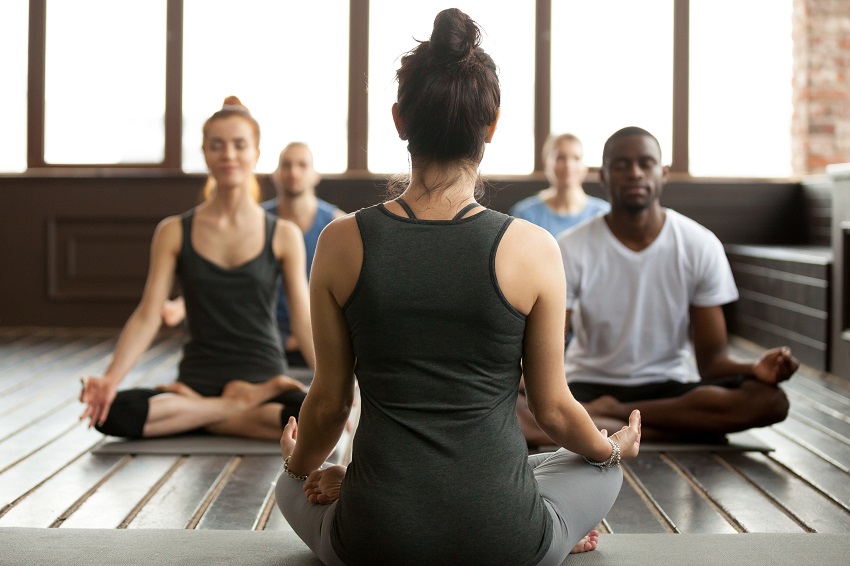Benefits Of A Yoga Instructor:
No question about it, the Internet can be an amazing resource. It can help someone that’s a complete beginner to become efficient at many things. Be that as a builder, weightlifter, and yes, even a yogi. However, having an instructor with you as a beginner to help undertested techniques, both physically with postures, and breathing, is irreplicable. Today we’ll discuss benefits of a yoga instructor.
In addition to what they bring initially to your practice, a yoga instructor can help set your future practice up, on the “right foot”. Thus, helping you build a solid foundation to flourish now, and down the road.

The Role Of A Yoga Teacher:
The role of a yoga teacher is to transfer information to the student. Simulatensouly, in a way with respect, rigor, and precision of that to which he/she has also received. Similarly, to the teaching passed on, you’ll want your instructor to have also received quality training. Oftentimes, the strength of information by the teacher depends fundamentally on their own practice and experimentation with the methodology that yoga proposes.
As an instructor, it’s important to direct each exercise. The instructor can help a beginner yogi to understand foundations of each asana and/or pranayama. Having a step-by-step orientation to each asana or breathing exercise is essential to your success.
Being a yoga instructor should not include be ‘how to execute each asana’. The theoretical knowledge or mere execution in front of students for imitation purposes is not enough. The yogic practice is much more then this. This may actually hinder the yogi’s practice in the long run.
The Right Way:
Not only should the execution be taught, but knowledge of the actual asana, origins, meaning should be understood through study and experimentation. In this way, the teacher knows from his/her own sensations and experiences. For example, which muscles are involved in an asana, corrections, expected difficulties, making adjustment(s) to asana’s or pranayama.
In addition, how to bring back focus after distraction(s), warning a student in advance of possible mistakes, reading your students body language and so on.
Benefit Of A Yoga Instructor – Correctness Of The Exercises:
In this sense, the most important role of the yoga teacher after the teaching is correction of the exercises. Corrective action, when needed, is essential to long term success of practicing yoga correctly. Thus, equating to a safe and effective conclusion. The objective of each session is that the student learns, executes, advances practice, and evolves.

Again, yoga is not merely execution of asanas. It is not just about execution of breath. At it’s most basic level, yoga stands for ‘union’. Union of body and mind, by the use of breath. Simulatensouly, a continuous attention to the area that is sensitized.
A constant mental presence is also needed, in all phases. This includes, respiratory control (pranayama), concentration exercises (dharana), and meditation (dhyana). The teacher’s mission is to be present, to be aware of the work that his/her students are doing and to keep the student’s attention in all phases of the exercise. Thus, intervening, correcting and encouraging him/her, when necessary.
This continuous work on the part of the student constitutes progressive training. Each yoga session becomes a way to sensitize and integrate these different components; physical, energetic, mental and oftentimes, spiritual.
The “Carry-Over” Effect:
If we are constant in our practice, we will learn to develop active “presence” in our daily life, in our relationship with the environment. Truly, another role of the yoga teacher in relation to the student. To help modify his/her attitudes with himself/herself and with others, aware of the role that corresponds to him/her as a human being.
“The yoga session is the beginning of a whole job in real life”
Just as the practice of asana’s exists to facilitate the movement of breath and prana, so does the mentoring relationship to move and transform us. We must be willing to tailor each individual teacher-student relationship.
Both the yoga teacher and student must take responsibility for creating their own unique relationship. Beforehand, it is advisable to discuss and agree on the main scope of the relationship and its operational spaces (training, therapy and personal transformation).
Final Thoughts On The Benefits of A Yoga Instructor!
Since yoga involves evolution, it is also recommended that there is an ongoing dialogue and acceptance that the relationship is dynamic. Things can change. Goals can change, as well as how to achieve them. Yoga (in of itself) is fundamentally a process of change. Thus, adapting to our current needs as a teacher-student in modern times.
If we take an attitude of openness, care and respect as the foundation of our student-teacher relationship, we will be more willing to ensure that the continued functional application of yoga is a transformational process towards self-empowerment.
References:
- https://www.everydayhealth.com/yoga/




